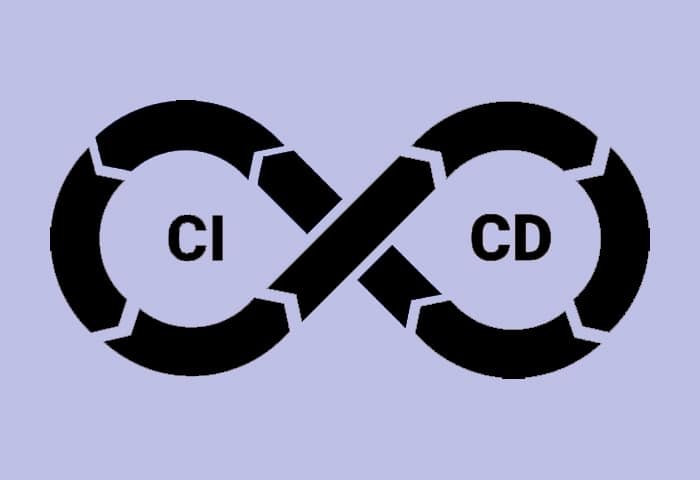In the fast-evolving world of software development, efficiency, reliability, and speed are essential for success. As digital transformation accelerates across every industry, software delivery pipelines must adapt to meet new demands for agility and quality. Continuous Integration (CI) and Continuous Deployment (CD) have emerged as the cornerstone practices enabling teams to deliver software faster, more reliably, and with greater confidence. CI/CD represents not just a set of tools or practices but a fundamental shift in how organizations think about building, testing, and deploying applications.
At its core, CI/CD automates the process of integrating code changes, testing them thoroughly, and deploying them to production environments. It bridges the gap between development and operations, enabling a culture of collaboration, transparency, and continuous improvement. Whether in startups or large enterprises, CI/CD pipelines have become essential to modern software delivery, helping organizations achieve faster release cycles, reduce errors, and respond more effectively to market changes.
Understanding CI/CD requires examining its components, benefits, implementation strategies, and the cultural transformation it brings to organizations. More than a technical methodology, CI/CD is a philosophy that reshapes how software is built, tested, and delivered in the era of DevOps and cloud computing.
The Evolution of Software Development Practices
To appreciate the importance of CI/CD, it is helpful to understand how software development practices have evolved. In the early days of programming, teams followed traditional waterfall methodologies, where each stage—requirements gathering, design, implementation, testing, and deployment—occurred sequentially. This approach, while structured, often led to slow release cycles and a lack of flexibility. Bugs discovered late in the process were expensive to fix, and integrating new features required significant effort.
As software complexity grew, developers began seeking methods to streamline the integration process. The 1990s saw the rise of Agile methodologies, emphasizing iterative development, customer feedback, and continuous improvement. Agile broke down large projects into smaller, manageable sprints, allowing teams to deliver incremental value. However, Agile alone did not solve the challenges of integration and deployment. Code from multiple developers still needed to be merged, tested, and deployed—a process that remained error-prone and time-consuming.
This challenge gave birth to Continuous Integration, pioneered by thought leaders such as Martin Fowler and Kent Beck. Continuous Integration introduced the practice of frequently merging code changes into a shared repository, ensuring that integration issues were identified and resolved early. The next logical step was Continuous Deployment, which extended automation beyond integration and testing to include the release of software into production. Together, CI/CD transformed software development into a continuous, automated, and highly efficient process.
Understanding Continuous Integration
Continuous Integration (CI) is the practice of automatically integrating code changes from multiple contributors into a shared repository several times a day. Each integration triggers an automated build and a suite of tests to verify that the code functions as expected. The primary goal of CI is to detect and resolve integration issues early, before they accumulate and become more complex.
In a CI environment, developers commit their changes frequently—sometimes several times a day—rather than waiting for long periods between integrations. Each commit initiates a build pipeline that compiles the code, runs unit tests, and generates feedback on whether the changes are compatible with the existing codebase. If a build fails, developers are notified immediately, allowing them to fix the issue quickly.
Continuous Integration relies heavily on automation. Manual integration and testing processes are replaced with automated tools that ensure consistency and reliability. Version control systems like Git, combined with CI tools such as Jenkins, GitLab CI, CircleCI, or GitHub Actions, make it possible to create reproducible and traceable build environments.
The philosophy behind CI encourages smaller, incremental changes over massive, infrequent updates. By maintaining a continuously integrated codebase, teams minimize the risks associated with merging large code changes, reduce debugging time, and increase overall software stability.
Understanding Continuous Deployment
Continuous Deployment (CD) builds on the principles of Continuous Integration by automating the release process. Once code has passed all integration and testing stages, it is automatically deployed to production without manual intervention. The objective is to ensure that every change that passes automated testing is immediately available to end users.
Continuous Deployment represents the ultimate form of automation in the software delivery pipeline. It eliminates human bottlenecks and ensures that software is always in a deployable state. While CI focuses on the quality of code integration, CD emphasizes the reliability and speed of delivery.
Implementing Continuous Deployment requires a robust testing infrastructure and a culture of trust in automation. Every stage of the deployment process—from building, testing, and staging to production release—must be automated and monitored. Quality assurance is not removed from the process; instead, it is integrated into every phase through automated unit, integration, performance, and security tests.
For organizations not ready to adopt full Continuous Deployment, Continuous Delivery serves as an intermediate step. Continuous Delivery ensures that software is always ready to be deployed but requires a manual approval step before production release. This hybrid approach allows organizations to retain control over deployment timing while benefiting from automation and consistency.
The CI/CD Pipeline
The CI/CD pipeline is the automated process that connects code integration, testing, and deployment. It acts as a digital assembly line that ensures every change is built, tested, and delivered efficiently.
A typical CI/CD pipeline begins when a developer commits code to a version control repository. This action triggers the CI server to fetch the latest code, build it, and run automated tests. If the tests pass, the pipeline proceeds to the deployment stage, where the code is packaged and deployed to staging or production environments. Monitoring tools track the health and performance of the application, ensuring that any issues are quickly detected and resolved.
Each stage of the pipeline—source, build, test, deploy, and monitor—plays a critical role in maintaining software quality. Automation tools manage dependencies, execute tests, and handle rollback procedures if something goes wrong. The pipeline can be customized based on the organization’s needs, incorporating additional steps such as security scanning, code quality analysis, or container image creation.
The Benefits of CI/CD
The adoption of CI/CD brings numerous advantages to development teams, operations personnel, and organizations as a whole. One of the most significant benefits is speed. By automating integration, testing, and deployment, CI/CD dramatically shortens the time between writing code and delivering it to users. This acceleration enables businesses to respond rapidly to market changes and customer feedback.
CI/CD also enhances software quality. Continuous testing ensures that bugs are detected early in the development cycle, when they are easier and less costly to fix. Automated regression tests prevent previously solved issues from reappearing. The result is more stable and reliable software releases.
Another major advantage is improved collaboration. CI/CD encourages communication between developers, testers, and operations teams. By integrating changes frequently, developers stay aligned with each other’s work, reducing conflicts and promoting a shared sense of ownership.
The visibility provided by CI/CD pipelines also supports better decision-making. Teams can monitor the status of builds, test results, and deployments in real time, allowing for immediate insights into the health of the project.
From an operational standpoint, CI/CD reduces risk. Frequent, smaller releases are easier to test and roll back than infrequent, large deployments. Automated pipelines also standardize the release process, eliminating human error and ensuring consistent environments across development, staging, and production.
Finally, CI/CD fosters a culture of continuous improvement. The automation and feedback loops built into the process encourage experimentation and learning, enabling teams to refine their workflows over time.
The Role of Automation in CI/CD
Automation is the foundation of CI/CD. Without it, the efficiency and consistency that characterize modern software delivery would be impossible. Automation spans every stage of the pipeline, from code compilation and testing to deployment and monitoring.
In Continuous Integration, automation ensures that every code change is automatically built and tested. Developers receive immediate feedback on whether their changes integrate smoothly with the existing codebase. In Continuous Deployment, automation extends to the release process, deploying updates automatically when tests pass.
Automation tools also manage dependencies, environment configuration, and infrastructure provisioning. Infrastructure as Code (IaC) technologies such as Terraform, Ansible, and AWS CloudFormation enable consistent environment creation across development, testing, and production. This consistency eliminates the notorious “it works on my machine” problem, ensuring reproducibility and stability.
Moreover, automated testing frameworks such as JUnit, Selenium, PyTest, and Cypress form the backbone of quality assurance in CI/CD pipelines. They enable comprehensive testing at various levels, from unit and integration tests to performance and security validations.
By automating repetitive tasks, CI/CD frees developers and operations teams to focus on higher-value activities such as innovation, optimization, and problem-solving.
The Intersection of CI/CD and DevOps
CI/CD and DevOps are closely intertwined. DevOps is a cultural and organizational movement that seeks to unify development and operations teams to achieve faster, more reliable software delivery. CI/CD provides the technical foundation for implementing DevOps principles.
Both CI/CD and DevOps emphasize collaboration, automation, and feedback. In a DevOps culture, silos between development, testing, and operations are broken down, and all stakeholders share responsibility for software quality and reliability. CI/CD enables this by creating automated workflows that span the entire software lifecycle.
The synergy between CI/CD and DevOps extends to infrastructure management as well. With the rise of cloud computing and containerization, CI/CD pipelines can deploy applications to scalable, self-healing environments managed through Kubernetes, Docker, and serverless platforms. This integration allows for continuous delivery of value while maintaining high availability and performance.
Challenges in Implementing CI/CD
While CI/CD offers immense benefits, its implementation is not without challenges. One of the most common obstacles is cultural resistance. Transitioning from traditional development methods to automated pipelines requires a mindset shift. Teams must embrace collaboration, transparency, and trust in automation.
Another challenge lies in tooling and integration. The CI/CD ecosystem is vast, with numerous tools available for version control, build automation, testing, deployment, and monitoring. Selecting and integrating the right combination can be complex and time-consuming.
Testing coverage is another critical factor. Without comprehensive automated tests, Continuous Deployment can introduce risks, as undetected bugs may reach production. Investing in robust testing frameworks and maintaining test quality is essential for successful CI/CD adoption.
Security also presents challenges. As automation accelerates software delivery, security vulnerabilities can propagate faster. Integrating security testing into the CI/CD pipeline—known as DevSecOps—helps address this issue by shifting security checks left in the development process.
Lastly, scaling CI/CD pipelines across large, distributed teams requires careful orchestration. Consistent configuration management, efficient resource utilization, and reliable monitoring are vital to maintaining pipeline performance at scale.
The Role of Testing in CI/CD
Testing is the heartbeat of CI/CD. Every automated process depends on reliable tests that validate the correctness, performance, and security of the software. In a CI/CD pipeline, tests are not a separate phase but an integral part of every stage.
Unit tests verify individual components of the code, ensuring that each function performs as expected. Integration tests validate the interactions between components, while system tests evaluate the entire application’s behavior. Regression tests ensure that new changes do not reintroduce old defects.
Performance and load tests measure how the system behaves under stress, while security tests detect vulnerabilities such as code injection or insecure dependencies. These tests are often automated using specialized frameworks that integrate seamlessly with CI/CD tools.
Effective test automation requires a strategic approach. Tests must be reliable, fast, and maintainable. Flaky tests—those that fail intermittently—can undermine trust in automation and slow down the pipeline. Therefore, continuous maintenance of the test suite is essential.
By embedding testing deeply within the CI/CD process, organizations can achieve high confidence in their software quality while maintaining rapid release cycles.
Monitoring and Feedback in CI/CD
Continuous Integration and Deployment do not end when software is released. Monitoring and feedback are crucial to maintaining application health and performance. Continuous monitoring ensures that issues such as latency, errors, or resource bottlenecks are detected in real time.
Modern CI/CD pipelines integrate observability tools such as Prometheus, Grafana, Datadog, and New Relic to track key performance indicators. Logs, metrics, and traces provide visibility into how applications behave in production environments. Automated alerts notify teams when anomalies occur, enabling rapid incident response.
Feedback loops are equally important. Data collected from production informs future development decisions. If a deployment introduces a performance regression, teams can roll back changes automatically and investigate the root cause. This iterative process of feedback and improvement reinforces the “continuous” aspect of CI/CD.
Monitoring also supports user-centric development. By analyzing real-world usage data, developers can prioritize features and enhancements that deliver the most value to customers.
Security in CI/CD
Security in CI/CD pipelines is a growing concern as automation accelerates software delivery. Integrating security practices into every stage of the pipeline is essential to prevent vulnerabilities from slipping into production. This approach, known as DevSecOps, ensures that security is not an afterthought but an integral part of development and deployment.
Security scanning tools automatically check for vulnerabilities in code, dependencies, and container images. Static Application Security Testing (SAST) analyzes source code for potential flaws, while Dynamic Application Security Testing (DAST) evaluates running applications. Dependency scanning tools identify outdated or vulnerable libraries.
Access control and credential management are equally critical. Secrets such as API keys and passwords must be securely stored and managed using tools like HashiCorp Vault or AWS Secrets Manager.
By embedding security into the CI/CD pipeline, organizations can maintain compliance, reduce risk, and ensure that automation enhances rather than compromises safety.
The Business Impact of CI/CD
The impact of CI/CD extends beyond technical efficiency—it transforms business outcomes. Faster release cycles enable organizations to deliver value to customers continuously, creating a competitive advantage. With rapid feedback and iteration, companies can experiment more freely, test new ideas, and adapt to market changes.
CI/CD also enhances reliability, reducing downtime and improving user satisfaction. Automated pipelines minimize human error and standardize release processes, resulting in more predictable outcomes.
From a financial perspective, CI/CD reduces long-term costs by detecting defects early, minimizing rework, and optimizing resource utilization. It aligns technology teams with business goals, creating a seamless flow of value from development to end users.
Perhaps most importantly, CI/CD fosters innovation. By removing manual barriers and enabling continuous experimentation, it empowers organizations to take calculated risks and evolve quickly in an ever-changing digital landscape.
The Future of CI/CD
As technology continues to evolve, CI/CD will remain central to software delivery but will also adapt to new paradigms. The rise of artificial intelligence, machine learning, and cloud-native architectures is reshaping the landscape.
AI-driven CI/CD pipelines are emerging, where machine learning algorithms optimize testing, predict failures, and recommend code improvements. Cloud-native CI/CD solutions integrate seamlessly with container orchestration platforms like Kubernetes, enabling scalable, fault-tolerant deployments.
Serverless computing introduces new possibilities for CI/CD, where functions are deployed automatically in response to code changes without traditional infrastructure management. Edge computing further expands the need for distributed CI/CD systems capable of deploying software across global networks.
The future of CI/CD is not just about automation but about intelligence—creating adaptive, self-healing pipelines that learn and improve continuously.
Conclusion
Continuous Integration and Continuous Deployment have revolutionized how software is built, tested, and delivered. They represent a profound shift from manual, error-prone processes to automated, reliable, and scalable workflows that enable continuous innovation.
CI/CD matters because it aligns technology with business agility, empowering organizations to deliver high-quality software faster and more efficiently. It fosters collaboration, reduces risk, and creates a culture of continuous improvement.
In an age where software defines competitive advantage, CI/CD is not optional—it is essential. As organizations continue to embrace digital transformation, the principles of Continuous Integration and Continuous Deployment will remain the backbone of modern software development, ensuring that innovation never stops and that quality is continuously delivered to users worldwide.






